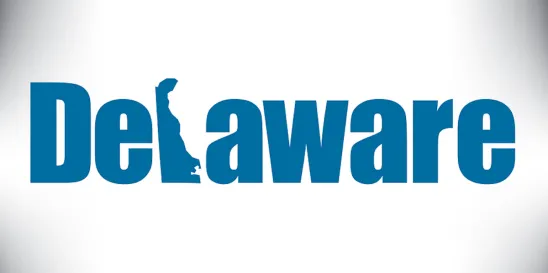Directors and officers (“D&O”) liability insurance policies typically include provisions that aim to treat two or more “related” claims as a single claim, back dating the later claim to the date the original claim was first made. Whether two or more claims are, in fact, “related” frequently leads to coverage disputes since the outcome can have significant coverage implications by shifting claims into or out of a particular policy period. Because policies change from one year to the next and can have different insurers, retentions, limits, sublimits, exclusions, and other terms, questions about relatedness can have an outsized effect on the availability and scope of coverage.
Courts nationwide differ in the way they grapple with related claims under D&O and other claims-made policies. In Delaware, courts previously found that two claims relate if they were “fundamentally identical,” which required that the claims involved the same subject and common facts, circumstances, transactions, events, and decisions. Recent guidance from the Delaware Supreme Court moved away from the fundamentally-identical standard in favor of a stricter adherence to policy language governing relatedness, but the recent Delaware Superior Court decision in Alexion Pharmaceuticals, Inc. v. Endurance Assurance Corp., Case No. N22C-10-340 PRW CCLD (Del. Super. Ct. Feb. 15, 2024), casts doubt on the applicable standard in Delaware. The uncertainty raises the question: moving forward, will Delaware courts base the relatedness inquiry on the plain, ordinary meaning of the specific policy language or something else?
In Alexion, the insured, a pharmaceutical company, sought coverage under its D&O liability insurance policies. The company had a 2014-2015 D&O policy program, which consisted of a primary policy and a series of excess policies that followed form to the primary policy. The company also had a 2015-2017 D&O policy program, which for a two-year term consisted of a primary policy and a series of excess policies that followed form to the primary policy. The primary insurers were the same for both policy programs, and the line of excess insurers were nearly identical except for the second level, third level, and ninth level excess insurers under the 2015-2017 D&O policy program. The company first contacted the primary insurer in June 2015 to report, via a notice of circumstances, an SEC subpoena served on the insured in 2015. At that time, the primary insurer did not consider the company’s communication to be a claim and stated it needed additional information. The company later provided notice in January 2017 of a securities class action filed against the company in 2016. The primary insurer ultimately decided that the SEC subpoena and the securities class action were related, and thus took the position that “the Securities Action, among other actions, was a single ‘Claim’ first made in the 2014-2015 policy period.” But one of the excess insurers under the 2014-2015 D&O policy program took a contrary position that the securities class action was not covered under the program because the SEC subpoena and the securities class action did not sufficiently overlap. And the second level, third-level, and ninth-level excess insurers under the 2015-2017 D&O policy program denied coverage for the securities class action under the program based on their position that the SEC subpoena and the securities class action were related and were, therefore, deemed to have been first made during the early 2014-2015 policy period before the excess insurers’ policies incepted. The company then filed suit and the issue before the Alexion court was whether the SEC subpoena and the securities class action were related claims.
While the Alexion court acknowledged the Delaware Supreme Court guidance that relatedness is not determined by a single generic standard, and that the relatedness inquiry is governed by the policy language, it still did not limit its analysis to the policy language. Based on its observation that “insurers are creatures of habit” and commonly reuse policy language, the Alexion court based its inquiry on how two other Delaware trial courts had interpreted similar policy language.
Rather than analyze relatedness based on the plain, ordinary meaning of the policy language in the 2015-2017 D&O program, the Alexion court cited two superior court decisions that involved policies with “nearly identical language” and held that, based on those prior decisions, the applicable standard of relatedness required a “meaningful linkage” between claims. The Alexion court did not clearly explain what is needed to meet the standard beyond the need for a “meaningful link,” but it did clarify that it is “not enough for two claims to mention some of the same facts.”
Although both the SEC subpoena and the securities class action involved the company’s activities in Brazil, the court found that to be only a “tangential” relationship and not the requisite meaningful link. Brazil was only one of several countries at issue and the SEC subpoena and the securities class action involved different alleged conduct. Thus, the court held that the factual connection between the SEC subpoena and the securities class action did not make them related claims. Based on this holding, the court granted the company’s motion for partial summary judgment and denied the insurers’ motion for summary judgment.
Relatedness does not always cut the same way. In Alexion, for example, the court’s finding that claims were unrelated favored the insured and undercut the excess insurers’ denial of coverage trying to push claims outside their coverage policy period. But the broader takeaway for policyholders is the potential shift back to a common-law standard, in Alexion a “meaningful linkage” standard, and away from a relatedness inquiry determined solely by the plain, ordinary meaning of the policy language.
The “meaningful linkage” standard applied in Alexion differs from prior guidance from the Delaware Supreme Court because the court’s analysis was not based exclusively on the policy language agreed to by the parties. The Alexion court still applied a common-law standard interpreting the policy language, including the conclusion that claims are not related even if they are based in part on the same facts. This departs from some broader related-claim provisions, which define related claims in part to include all claims “based upon, arising from or in any way related to the same facts” or wrongful acts that have as a common nexus “any fact.” Under either of those broad provisions, two claims, like those in Alexion, could be related based on a single, overlapping fact. But the court nevertheless concluded that something more was required.
The Delaware Supreme Court has held that Delaware corporations and their insured officers and directors should be able to get the benefit of Delaware law applying in coverage disputes. Thus, policyholders assessing insurance claims that may be governed by Delaware law should approach relatedness inquiries with the understanding that the standard applied in practice may differ from what the language in the policy may otherwise dictate. Will Alexion be an outlier or does it signify that Delaware courts will now apply a new generic standard, or potentially multiple generic standards, to determine relatedness? Given Delaware’s growing prominence in issuing significant rulings on critical coverage issues, policyholders and insurers alike will continue to evaluate further developments on “related” claim issues in Delaware courts moving forward.






 />i
/>i
